Multi Jet Fusion, a 3D printing technology introduced to the market by HP in 2016, is one of the most popular types of 3D printing, especially at 3D printing services. Why? For one, the process is very consistent and predictable across machines because they’re all made by HP. Plus, it’s fast and efficient since dozens, or even hundreds, of parts can fit into one print cycle, enabling print services to complete multiple part orders in one go.
If you’re ordering 3D printed parts at a service, you’ll notice that there are several materials to pick from that are unique to Multi Jet Fusion (MJF). In fact, all MJF materials are proprietary, and you can’t feed just any material into an MJF machine. All MJF materials are polymers. HP’s metal 3D printing process is called Metal Jet.
In this guide, we cover every MJF material and detail the properties and benefits of each so you can make the best material choice for your 3D printed parts.
If you’re not already familiar with MJF technology, skip down to the end where we describe it in detail.
| Material | Polymer Category | Tensile strength (X/Y) | Elongation at break (X/Y) |
|---|---|---|---|
| PA 12 Nylon enabled by Evonik | Stiff | 54 MPa | 18% |
| HP 3D High Reusability PA 12 Glass Beads | Stiff | 30 MPa | 10% |
| HP 3D HR PA 12 S enabled by Arkema | Stiff | - | - |
| PA 12 Nylon W (white) | Stiff | 49 MPa | 17% |
| HP 3D High Reusability PA 11 | Stiff | 52 MPa | 50% |
| HP 3D High Reusability PP (polypropylene) enabled by BASF | Stiff | 30 MPa | 20% |
| HP 3D High Reusability TPA enabled by Evonik | Flexible | - | - |
| Estane 3D TPU by Lubrizol | Flexible | 17 MPa | 370% |
| BASF Ultrasint TPU01 | Flexible | 9 MPa | 220% |
MJF Material Overview & Features
Initially, Multi Jet Fusion was only compatible with nylon PA 12 powders. Although this is still the most common option, the breadth of available materials has expanded over the years with new ones still in development.
Although Multi Jet Fusion is a type of powder bed fusion, that doesn’t mean all powder bed compatible materials will work with MJF. In fact, the material list for MJF is much shorter than other powder bed fusion technologies, such as selective laser sintering (SLS). But material manufacturers are responding to MJF’s growing popularity. HP worked with polymer experts BASF, Evonik, and Lubrizol to develop MJF-compatible materials.

What is High-Reusability?
Some MJF materials are called high-reusability powders, which refers to using the same powder over and over again. The unused powder from one print run is collected and used again. However, to use it again, it’s typically mixed with fresh powder. The term “high-reusability” refers to the amount of used powder to fresh powder. In HP’s case, its “high reusability” powders require just 20% to 35% fresh powder to reused powder.
PA 12 Nylon enabled by Evonik
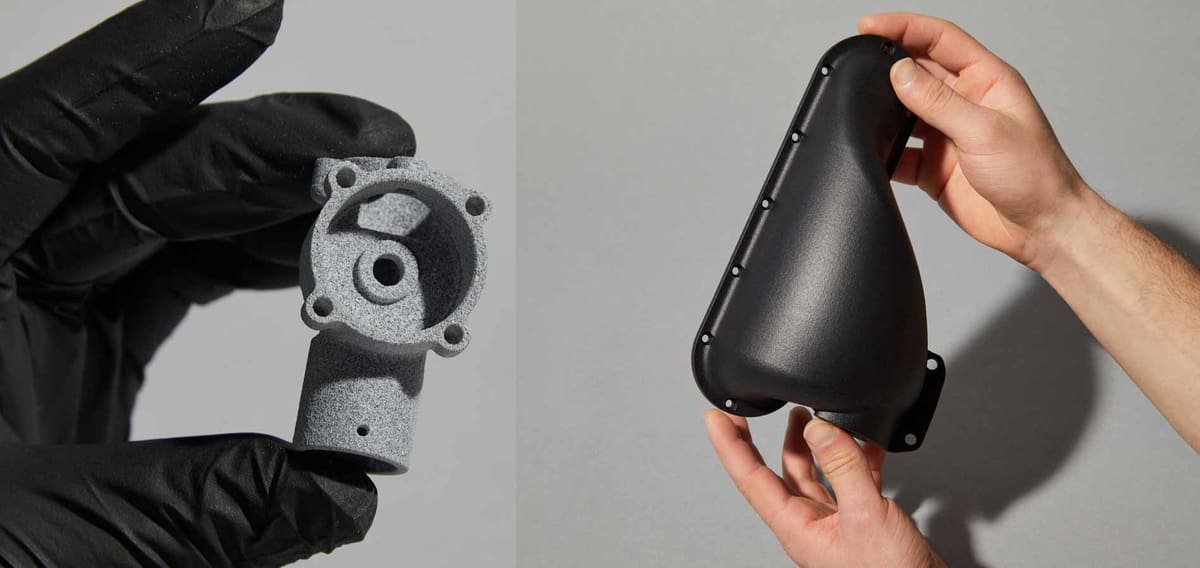
HP’s PA 12 nylon comes in two colors, black and gray, and is suited for stiff, durable, highly detailed parts. This material is ideal for housings, assemblies, and both water and air tight enclosures.
PA 12 Nylon is biocompatibility certified – meeting USP Class I-VI and US FDA guidance for Intact Skin Surface Devices – making it an option for eyewear and medical devices.
HP says its PA 12 Nylon is designed for rapid prototyping, across a spectrum of industries and can be used for everything from complex geometries to simple but rugged nuts and bolts.
- Particle size: 60 µm
- Tensile strength (X/Y): 54 MPa
- Elongation at break (X/Y): 18%
- Compatible with: 5600, 5200, 4200, and 5000 HP MJF printers
HP 3D High Reusability PA 12 Glass Beads
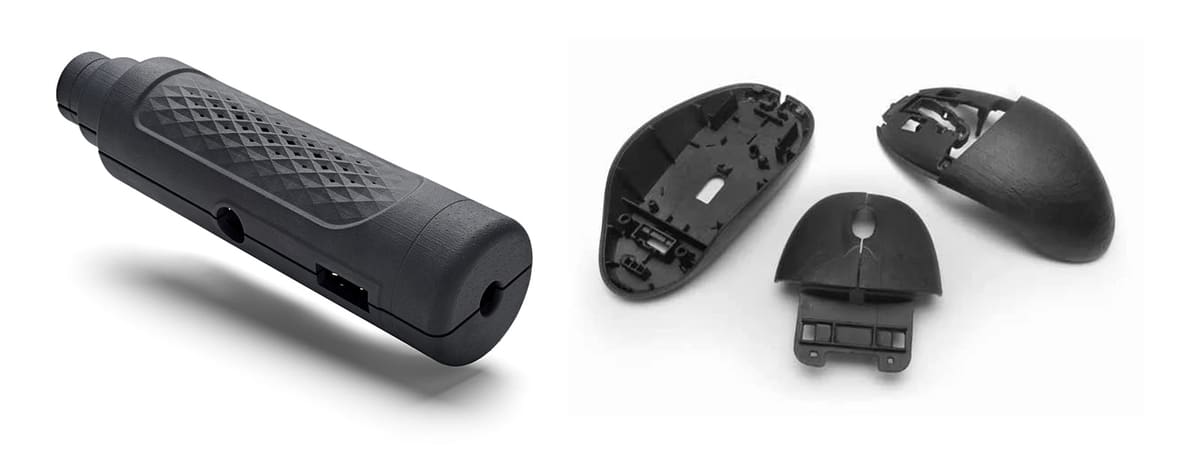
The PA 12 Nylon Glass Bead (GB) by HP is just what it sounds like – nylon plastic with 40% integrated glass beads. The beads reduce warping and improve overall stiffness. Basically, this product is great for all the same uses as PA 12 nylon but which have long, flat geometries – characteristics that would cause warping without the added glass beads.
Like the PA 12, it has high reusability (up to 70%), making it cost effective, and is also used for fixtures and tooling, and applications that require high detail and accuracy across a range of industries. It is also water and air tight, and has the same certifications for biocompatibility.
This PA 12 is a fossil-fuel-based material so it may not meet your company’s sustainability goals, yet the glass beads come from recycled glass.
- Particle size: 58 µm
- Tensile strength (X/Y): 30 MPa
- Elongation at break (X/Y): 10%
- Compatible with: 5200 and 4200 HP MJF printers
HP 3D HR PA 12 S enabled by Arkema
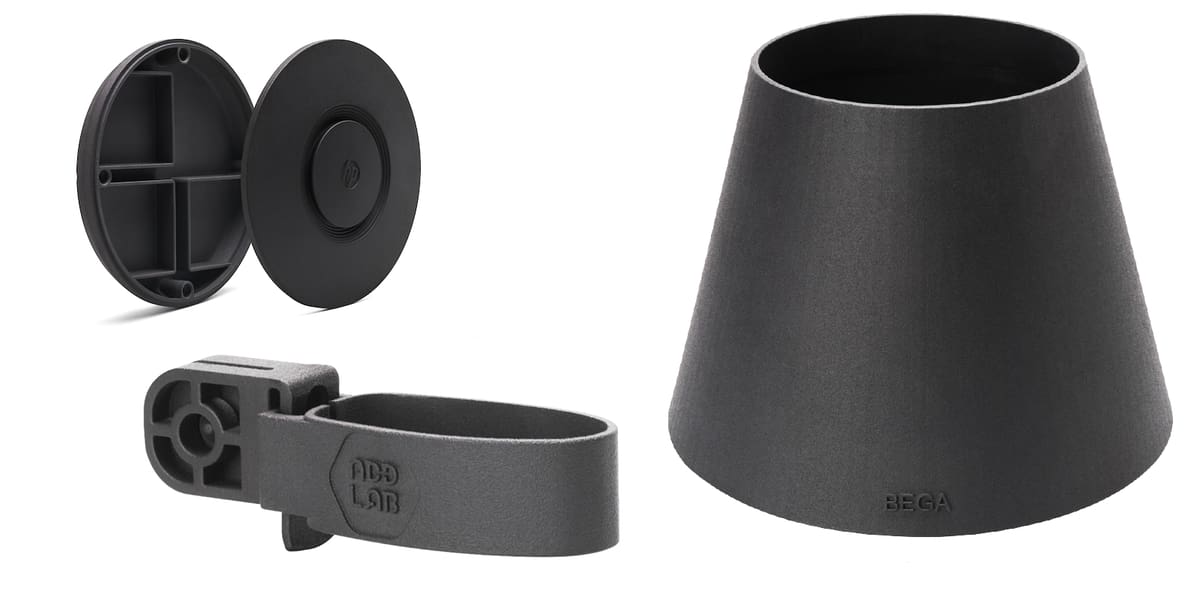
This nylon PA 12 from Arkema distinguishes itself from the PA 12 by Evonik by the letter S, which stands for smooth. MJF parts, like all laser powder bed fusion parts, are not super smooth out of the printer, in fact, they’re pretty rough, but this material goes a long way toward cutting down on the need to use post-processing, like vapor smoothing, to smooth your MJF parts.
HP says this PA 12 delivers parts directly from the printer that are up to 70% smoother than the Evonik PA12, thanks to a unique particle shape and narrow particle size distribution, which makes it ideal for when exceptionally smooth surfaces are required.
This smoothness lends itself to applications such as models for dental aligners and any end-use consumer part that needs to mimic an injection molded part. This PA 12 is a fossil-fuel-based material so it may not meet your company’s sustainability goals.
- Compatible with: 5200 HP MJF printers
PA 12 Nylon W (white)
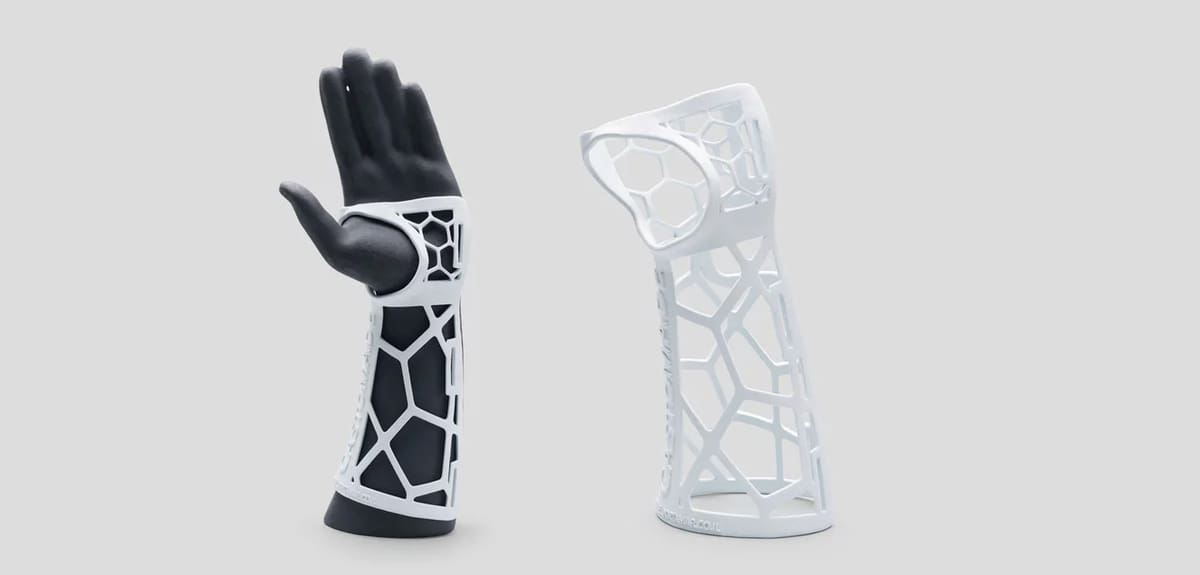
The newest MJF material is something customers have long been asking for: a white nylon. HP’s other nylons are grey or black which made custom color dying nearly impossible. For customers who had bright colors as a part requirement, they opted for selective laser sintering. HP solved that problem with PA 12 Nylon W, which opens up a range of new applications in prosthetics, medical equipment, lighting decor, fashion and wearables, and household appliances.
If you’re going with a 3D printing service to print and custom color your parts, note that the new white material is not that widely available yet. We found it at Craftcloud, Endeavor 3D, Prototal, and Weerg.
- Particle size: 57 µm
- Tensile strength (X/Y): 49 MPa
- Elongation at break (X/Y): 17%
- Compatible with: 5400 HP MJF printers
HP 3D High Reusability PA 11
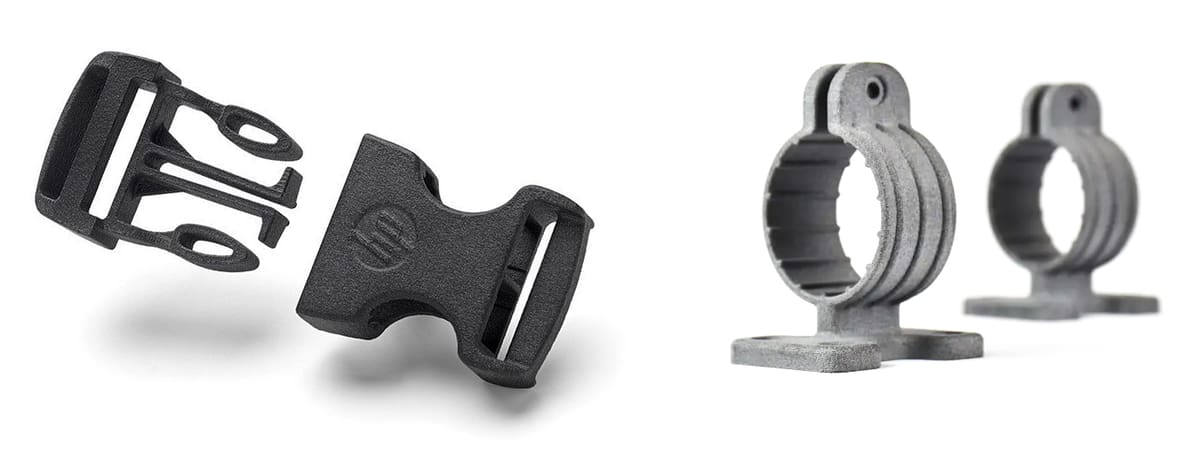
The HP MJF PA 11 material is based 100% on renewable raw materials and is characterized by high toughness as well as impact resistance and formability. It retains its excellent properties over a wide temperature range (> 40°C – 130°C>).
In addition, the material does not splinter when force is applied, but tears, which is why it is particularly important in the automotive industry and is often used in vehicle interiors. This PA 11 is biocompatible.
Boosting its sustainability even more is the fact that HP uses biomethane for polymer production, which reduces the material’s carbon footprint by 46%. The powder has 70% reusability.
- Particle size: 54 µm
- Tensile strength (X/Y): 52 MPa
- Elongation at break (X/Y): 50%
- Compatible with: 5600, 5200, 4200, and 5000 HP MJF printers
HP 3D High Reusability PP (polypropylene) enabled by BASF
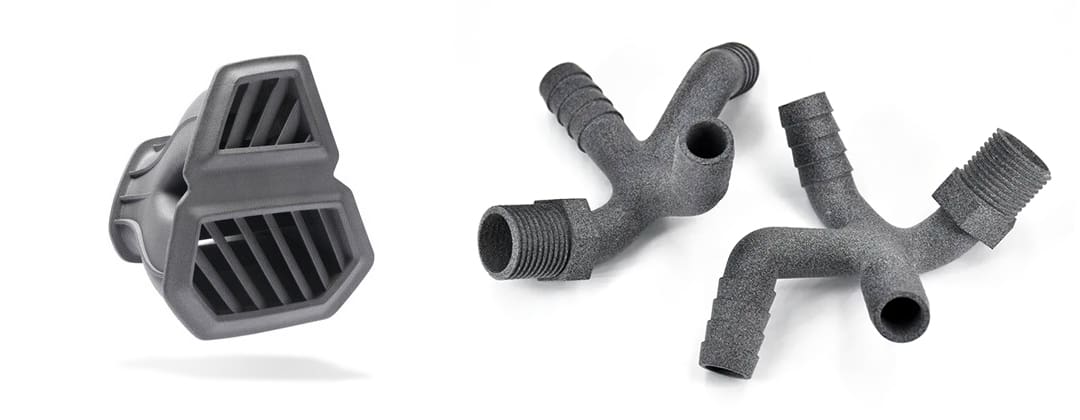
There are a lot of reasons you might want to print with polypropylene instead of nylon: excellent chemical resistance and low moisture absorption ideal for piping or fluid systems, and containers. In fact, we have a full guide on printing with PP at this link below.
When it comes to MJF materials, the same reasons apply. HP’s PP powder is bio-compatible — meets ISO 10993 and US FDA guidance for Intact Skin Surface Devices, plus HP says it meets strict automotive safety standards, including the Federal Motor Vehicle Safety Standard (FMVSS).
This material boasts good welding capabilities with other PP parts produced with traditional methods, like injection molding, so you can combine a MJF PP spare part into your traditionally produced PP assembly.
This powder option is not only HP’s lowest cost but it has up to 90% reusability.
- Particle size: 62 µm
- Tensile strength (X/Y): 30 MPa
- Elongation at break (X/Y): 20%
- Compatible with: 5200 HP MJF printers
HP 3D High Reusability TPA enabled by Evonik
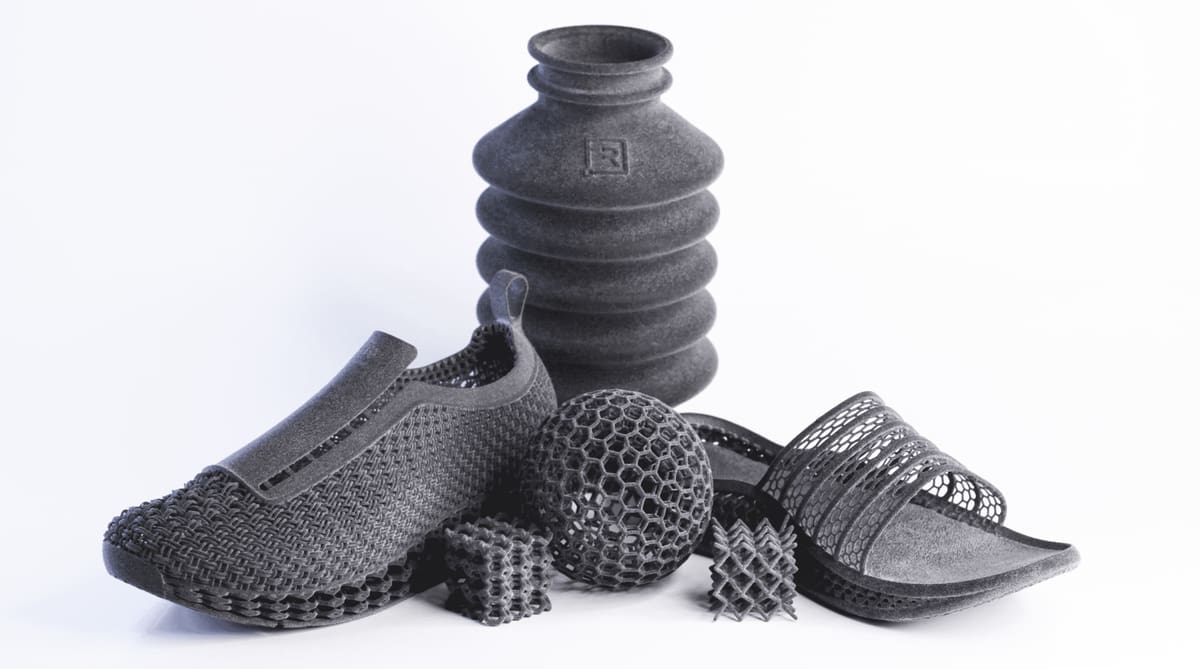
MJF is excellent at processing nylons, so it makes sense that one of the flexible material options available on the machines is a TPA, which is a type of nylon.
TPA is more flexible than many other polyamides, making it suitable for applications that require materials with good impact resistance and the ability to bend without breaking, such as winter sports equipment, car interiors, robotics and grippers, and fluid systems.
MJF’s TPA has an 80% powder reusability.
- Particle size: 77 µm
- Tensile strength (X/Y): –
- Elongation at break (X/Y): –
- Compatible with: 5200 HP MJF printers
Estane 3D TPU by Lubrizol
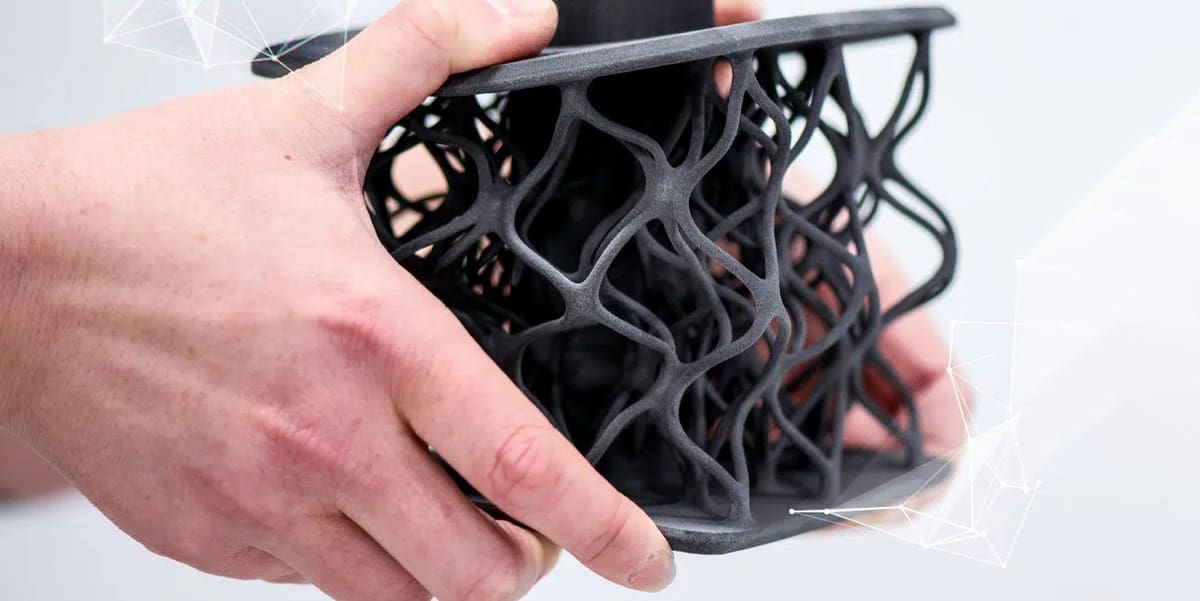
HP turned to material maker Lubrizol to formulate TPU materials for MJF, providing you with a solution for your parts that need to be highly flexible. TPU is much more flexible and elastic than TPA. It can stretch significantly and return to its original shape without permanent deformation.
TPU’s flexibility and rubber-like properties make it highly suitable for applications requiring excellent impact resistance and flexibility.
While the Lubrizol TPUs share many characteristics, such as flexibility, toughness, and chemical resistance, they differ mainly in their hardness and specific performance properties.
Estane 3D TPU M95A has a shore hardness of 95A and offers a good balance between flexibility and stiffness. It’s designed for applications, such as flexible connectors, that require durability and good wear resistance while still maintaining a degree of flexibility.
Estane 3D TPU M88A scores 88A on the Shore scale, meaning it is softer and more flexible than the M95A. It provides higher elasticity and better elongation at break, making it more suitable for applications requiring greater flexibility and impact resistance, such as flexible gaskets, seals, cushioning elements, and wearable devices.
- Tensile strength (X/Y): 17 MPa
- Elongation at break (X/Y): 400%
- Compatible with: 5200 (M88A), 4200 (M95A) HP MJF printers
BASF Ultrasint TPU01
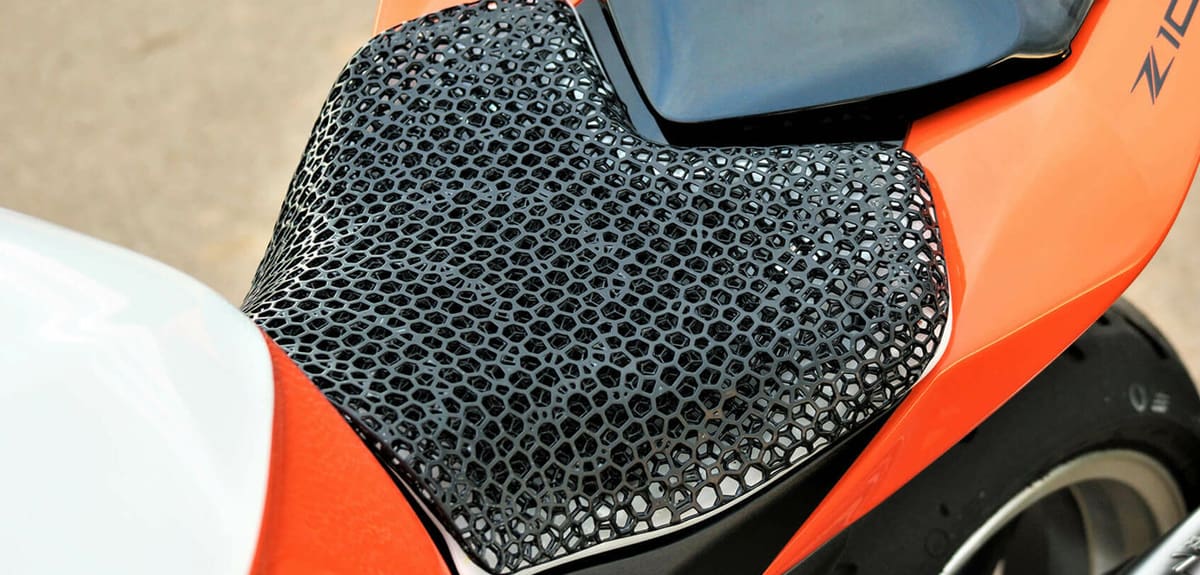
Ultrasint TPU01 is a multi-purpose TPU powder ideal for the production of parts requiring shock absorption, energy return or flexibility. Typical applications include sports protection equipment, footwear, orthopedic models, car interior components and various industrial tools like pipes and grippers.
HP says that the material offers strong, flexible, and durable part performance, combined with a good surface quality and level of detail.
The Shore hardness is between 88-90 A and the powder has a high recycle rate of 80%.
- Tensile strength (X/Y): 9 MPa
- Elongation at break (X/Y): 220 %
- Compatible with: 5200 HP MJF printers
What is MJF?
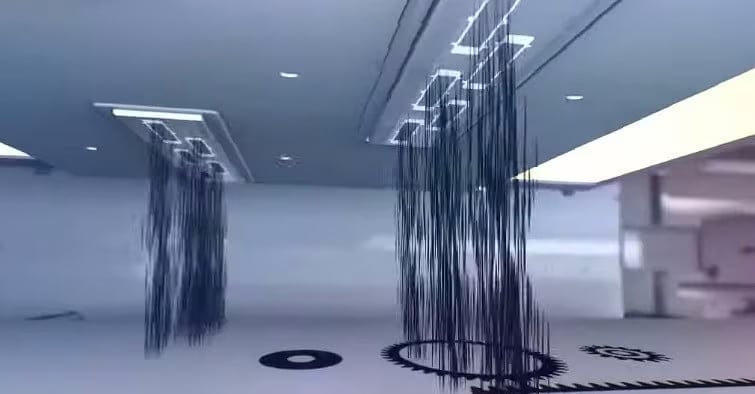
Basically, the technology involves using a type of liquid binding agent to fuse together powdered polymer material layer by layer. The technology gets its name from the multiple inkjet heads that carry out the process of distributing the liquid polymer (or binding agent).
In the Multi Jet Fusion printing process, the printer lays down a layer of material powder on the printing bed. Following this, an inkjet head runs across the powder and deposits both a fusing and a detailing agent onto it according to the digital model of the parts required. An infrared heating unit also moves across the print. Wherever a fusing agent was added, the underlying layer “melts” together, while the areas exposed with the detailing agent doesn’t fuse completely, but acts as a layer to ensure surface quality. Areas with no agent apply remain a powder. The unfused powder supports the fused material, which generally eliminates the need for supports. To finish the printing process, the entire powder bed – and the printed parts in it – are moved to a separate processing station. Here, most loose unfused powder is vacuumed up, allowing it to be reused instead of producing excess waste.
MJF is fast, detailed, and has proven itself to be reliable, which is why there’s hardly a 3D printing service around that doesn’t have at least one MJF machine among its equipment. Don’t confuse HP’s Multi Jet Fusion with its Metal Jet printing process used in its metal printers, which is very similar but uses metal powder instead of plastic. Our focus here is the Multi Jet Fusion technology, which only uses plastics.
Never Miss Any News:
License: The text of "Quick Start Guide to HP MJF 3D Printing Materials" by All3DP Pro is licensed under a Creative Commons Attribution 4.0 International License.





